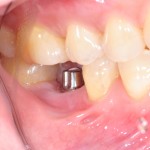
Peri-implantitis is a pathological condition of the tissues around dental implants characterised by inflammation in the peri-implant mucosa and progressive loss of supporting bone that may lead to implant loss. A recent review (Dental Elf – 24th Oct 2022) estimated a patient level prevalence of 20% (95%CI; 16.6 to 23.7%). Surgical and non-surgical treatment approaches have been employed to treat peri-implantitis.
The aim of this review was to compare the effectiveness of different surgical methods for peri-implantitis.
Methods
A protocol was registered in the PROSPERO database and searches undertaken n the Cochrane library, PubMed, Embase, Web of Science and ClinicalTrials.gov databases. This was supplemented by searches in the Journals, Journal of Dental Research, Journal of Clinical Periodontology, Journal of Periodontology, Clinical Oral Implants Research, Clinical Implant Dentistry, and Related Research, The International Journal of Oral & Maxillofacial Implants, Journal of Oral and Maxillofacial Surgery, International Journal of Oral Implantology, Clinical Oral Investigations, and International Journal of Periodontics and Restorative Dentistry. Randomised controlled trials (RCTs) of surgical treatments for peri-implantitis with a minimum of 3 months follow up were considered. Two reviewers independently selected studies extracted data and assessed risk of bias using the Cochrane risk of bias assessment tool (RoB 2). Credibility of findings was evaluated using Confidence in Network Meta-Analysis (CINeMA).
Results
- 13 parallel group RCTs involving a total of 542 patients published between 2012 and 2021 were included.
- 7 studies were considered to be at low risk of bias, 4 at high risk with 2 having some concerns.
- 5 studies compared open flap debridement (OFD) and augmentative therapy (AT), 2 studies compared OFD and OFD with photodynamic therapy (PDT), and one study compared OFD and OFD with local antibiotics (LA). One study compared resective therapy (RT) and RT with phosphoric acid (PA) and one study compared AT and AT+PDT, with another comparing AT and AT with ozone therapy (AT+O). Finally, 2 studies compared RT and OFD
- The following were derived from the network meta-analysis: –
- Augmentative therapy combined with ozone therapy (AT+O) or photodynamic therapy (AT+PDT) reduced probing depth (PD) significantly more than open flap debridement (OFD);
- Bone mass increase measured by radiographic bone fill (RBF) was significantly higher in AT + O than RT, OFD, OFD + PDT and OFD combined with local antibiotics (OFD+LA), while AT alone was significantly higher than OFD;
- No significant difference was identified for mucosal recession among the treatment groups;
- Resective therapy combined with phosphoric acid (RT + PA) showed the worst effect on BOP reduction compared to all other treatment groups while AT+O and OFD+PDT showed more reduction than OFD;
- AT achieved more CAL gain than OFD+PDT and OFD, and OFD+PDT achieved more CAL gain than OFD, all of which were statistically significant.
- Overall, AT+O showed the most significant response for all parameters.
- AT+O showed the highest probability to achieve the best outcome for all evaluated parameters: most PD reduction (probability 81.6%), most RBF gained (97.8%), most BOP reduction (87.6%) and most CAL gained (97.3%). All surgical procedures were less effective for mucosal retraction, with RT showing slightly higher probability (54.5%) of achieving the best outcome.
Conclusions
The authors concluded: –
…our data showed that augmentation surgery is capable of significantly increasing the amount of bone filling on imaging, whereas the control of peri-implant soft tissue inflammation is comparable to open flap debridement. Augmentative surgery combined with ozone therapy is likely to achieve better outcomes but should be implemented with caution as the quality of evidence is poor. The present data do not contribute to the final determination of the optimal surgical option for peri-implantitis.
Comments
The authors have registered a protocol with the PROSPERO database and undertaken a detailed search. 13 RCTs were identified with seven (54%) being considered to be at low risk of bias. However, the sample sizes are generally small, and a wide variety of interventions were tested. In addition the CINeMA confidence assessment for all the outcomes was rated as very low. This is in line with previous reviews of bone reconstructive treatments in peri-implantitis (Dental Elf –10th Mar 2023) and highlights a limited pool of evidence. As the number of dental implants placed continues to increase the need for high quality well-conducted and reported studies of appropriate size and duration on the prevention and treatment of peri-implant disease is ever more apparent.
Links
Primary Paper
Cheng J, Chen L, Tao X, Qiang X, Li R, Ma J, Shi D, Qiu Z. Efficacy of surgical methods for peri-implantitis: a systematic review and network meta-analysis. BMC Oral Health. 2023 Apr 19;23(1):227. doi: 10.1186/s12903-023-02956-6. PMID: 37076816; PMCID: PMC10116816.
Other references
Dental Elf –15th Mar 2023
Dental Elf –10th Mar 2023
Peri-implantitis – efficacy of different bone reconstructive therapies
Dental Elf – 24th Oct 2022
